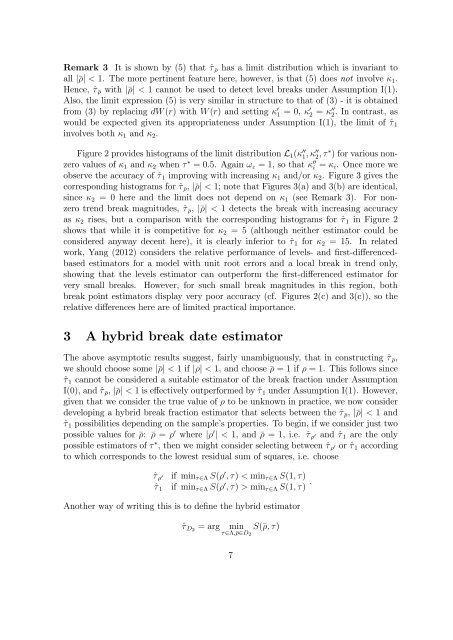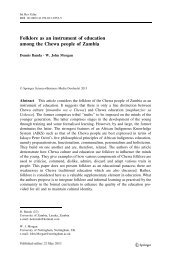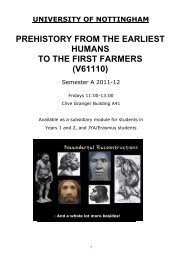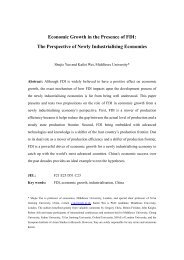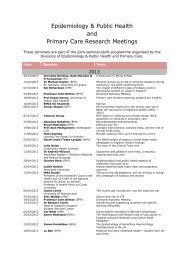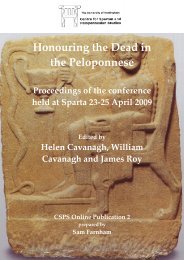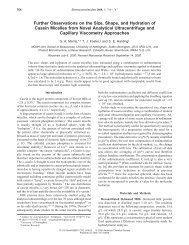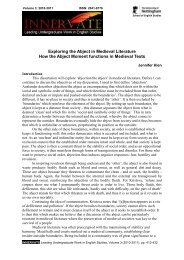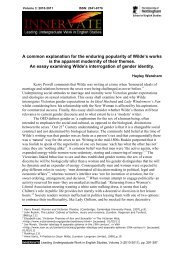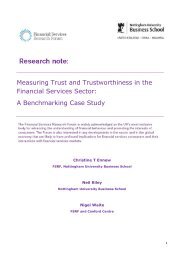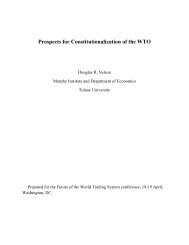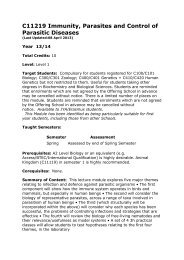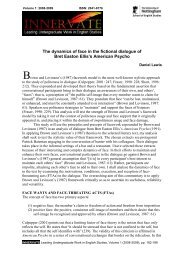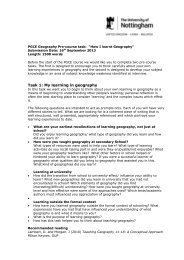Break date estimation for models with deterministic structural change
Break date estimation for models with deterministic structural change
Break date estimation for models with deterministic structural change
You also want an ePaper? Increase the reach of your titles
YUMPU automatically turns print PDFs into web optimized ePapers that Google loves.
Remark 3 It is shown by (5) that ^ has a limit distribution which is invariant to<br />
all jj < 1. The more pertinent feature here, however, is that (5) does not involve 1 .<br />
Hence, ^ <strong>with</strong> jj < 1 cannot be used to detect level breaks under Assumption I(1).<br />
Also, the limit expression (5) is very similar in structure to that of (3) - it is obtained<br />
from (3) by replacing dW (r) <strong>with</strong> W (r) and setting 0 1 = 0, 0 2 = 00<br />
2. In contrast, as<br />
would be expected given its appropriateness under Assumption I(1), the limit of ^ 1<br />
involves both 1 and 2 .<br />
Figure 2 provides histograms of the limit distribution L 1 ( 00<br />
1; 00<br />
2; ) <strong>for</strong> various nonzero<br />
values of 1 and 2 when = 0:5. Again ! " = 1, so that 00<br />
i = i . Once more we<br />
observe the accuracy of ^ 1 improving <strong>with</strong> increasing 1 and/or 2 . Figure 3 gives the<br />
corresponding histograms <strong>for</strong> ^ , jj < 1; note that Figures 3(a) and 3(b) are identical,<br />
since 2 = 0 here and the limit does not depend on 1 (see Remark 3). For nonzero<br />
trend break magnitudes, ^ , jj < 1 detects the break <strong>with</strong> increasing accuracy<br />
as 2 rises, but a comparison <strong>with</strong> the corresponding histograms <strong>for</strong> ^ 1 in Figure 2<br />
shows that while it is competitive <strong>for</strong> 2 = 5 (although neither estimator could be<br />
considered anyway decent here), it is clearly inferior to ^ 1 <strong>for</strong> 2 = 15. In related<br />
work, Yang (2012) considers the relative per<strong>for</strong>mance of levels- and rst-dierencedbased<br />
estimators <strong>for</strong> a model <strong>with</strong> unit root errors and a local break in trend only,<br />
showing that the levels estimator can outper<strong>for</strong>m the rst-dierenced estimator <strong>for</strong><br />
very small breaks. However, <strong>for</strong> such small break magnitudes in this region, both<br />
break point estimators display very poor accuracy (cf. Figures 2(c) and 3(c)), so the<br />
relative dierences here are of limited practical importance.<br />
3 A hybrid break <strong>date</strong> estimator<br />
The above asymptotic results suggest, fairly unambiguously, that in constructing ^ ,<br />
we should choose some jj < 1 if jj < 1, and choose = 1 if = 1. This follows since<br />
^ 1 cannot be considered a suitable estimator of the break fraction under Assumption<br />
I(0), and ^ , jj < 1 is eectively outper<strong>for</strong>med by ^ 1 under Assumption I(1). However,<br />
given that we consider the true value of to be unknown in practice, we now consider<br />
developing a hybrid break fraction estimator that selects between the ^ , jj < 1 and<br />
^ 1 possibilities depending on the sample's properties. To begin, if we consider just two<br />
possible values <strong>for</strong> : = 0 where j 0 j < 1, and = 1, i.e. ^ 0 and ^ 1 are the only<br />
possible estimators of , then we might consider selecting between ^ 0 or ^ 1 according<br />
to which corresponds to the lowest residual sum of squares, i.e. choose<br />
^ 0 if min 2 S( 0 ; ) < min 2 S(1; )<br />
^ 1 if min 2 S( 0 ; ) > min 2 S(1; ) :<br />
Another way of writing this is to dene the hybrid estimator<br />
^ D2 = arg min S(; )<br />
2;2D 2<br />
7


